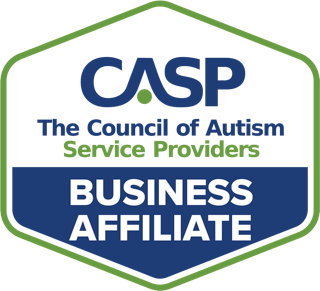This piece is based on our recent webinar presented by Daniel Law, ARM, CRIS and President of Liberty San Jose of The Liberty Company Insurance Brokers.
One of the most important business principles is to have an effective liability insurance policy in place to not only protect your business, but also yourself.
Insurance may be required for certain transactions and are usually a pre-requisite for the following:
- During the process of obtaining funds
- When applying in a school district/Regional center
- From Easter Seals/BHPN
- When trying to lease an apartment, a landlord may ask insurance from you
On the other hand, in order to be eligible for insurance, one must know the following:
- Limits and type of coverage is within the range $1m-$3m
- Indemnification
- Additional insurance
- Waiver of subrogation
ABA providers face unique risks such as:
- Inherent Risks with Autism
- Professional Exposure
- Dangers to Employees
- In-Home, School-Based, Clinic
- Hiring and Retention
- Regulation (Licensing, Funding Source, Authorizer)
ABA Therapy Liability Coverages
For ABA therapy, the liability coverages are as follows:
Professional Liability
This is covered by a wide range of aspects such as in professional services fees incurred, a wrongful act by an employee or even for some circumstances the government mandates that or from regulatory standards.
They may be liable as well to those who are additionally insured, who are already insured or those who have a waiver of subrogation.
General Liability
This covers bodily injury, property damage, personal injury and even advertising injury.
The coverage may be divided into 3rd party coverage, the number of occurrences, limits and deductibles.
The liability will also differ when there is additional insurance, has waiver of subrogation and to those with common exclusion.
Abuse/Molestation
This item covers the vicarious liability, exclusions, and limits with the first item being the most concentrated one.
Vicarious liability will be in effect if the person being insured is known, there is an innocent party defense, and what items will be/should be covered.
Automobile Liability
This item covers the hired automotive, non-owned automotive liability, and physical damage liability.
Physical damage is determined by which a person involved is insured/not insured, the application/coverage of the liability, and the determining of who can be able to drive and who cannot.
Cyber Liability
This is a liability policy that covers a data breach or compromised personal information of a client.
It can be covered by the consideration of HIPAA concerns, how much the coverage is and other options.
In this manner, the regulatory trends are appropriate to be considered.
The WCIRB – NCCI should be taken into account regarding Workers’ Compensation changes while for funding sources, the increased requirements and increased scrutiny should be considered as well.
Lastly, for regulatory trends, it is important that accreditation, state licensing, and inspections are to be considered as well.
In the aspect of claim trends, the following should have attention:
Independent contractors
RBT cannot be an IC or else it would be Mis-classification.
In the event the IC wants to have the medical bills paid, the action over claims must be understood. In terms of work comp issues, one must consider looking into those who are not paying a premium.
Cyber/Data Breach
In this type of claim, several items should be assumed to be claimed:
- HIPAA Allegations/Violations
- The costs involved incurred by the breach
- If the attacker claims for ransom
- The liability on who owns the records
These are some of the items that may be claimed in the event of a Cyber/Data Breach.
According to Bloomberg, health data breaches can cost more than $400 per patient and have an average claim trend of ~3m per year.
This is due to the fact that Phishing and social engineering have been the major drivers of cyber events.
Employment Practices Liability
Possible claim items include misclassification, wrongful termination of an employee and failure to pay appropriate wages and incidentals such as overtime, drive-time, and breaks.
Workers’ Compensation
This claim item includes worker vs. contractor claim disputes, classification systems, and even the origins/causes of the injuries.
Injury to Children
This is one of the most sensitive items mainly due to the fact that children are involved in this situation.
Claims could come from the clinical setting, community outings (i.e. injuries from accidents on the event), and even child abuse/molestation.
Indemnity and Defense
This claim item includes the item about contracts (i.e. a school was being sued by its employee after being injured), how the claim works and what are the items seen in certain situations.
RethinkBH provides an intuitive and comprehensive solution to scale your ABA business and ensure client success.
Our one-stop-shop platform is HIPAA compliant and offers both Clinical and Practice Management tools along with RBT Training, VB-MAPP licenses, and more than 1500 resources/materials as curriculum pieces.
Schedule a demo today at your convenience!









